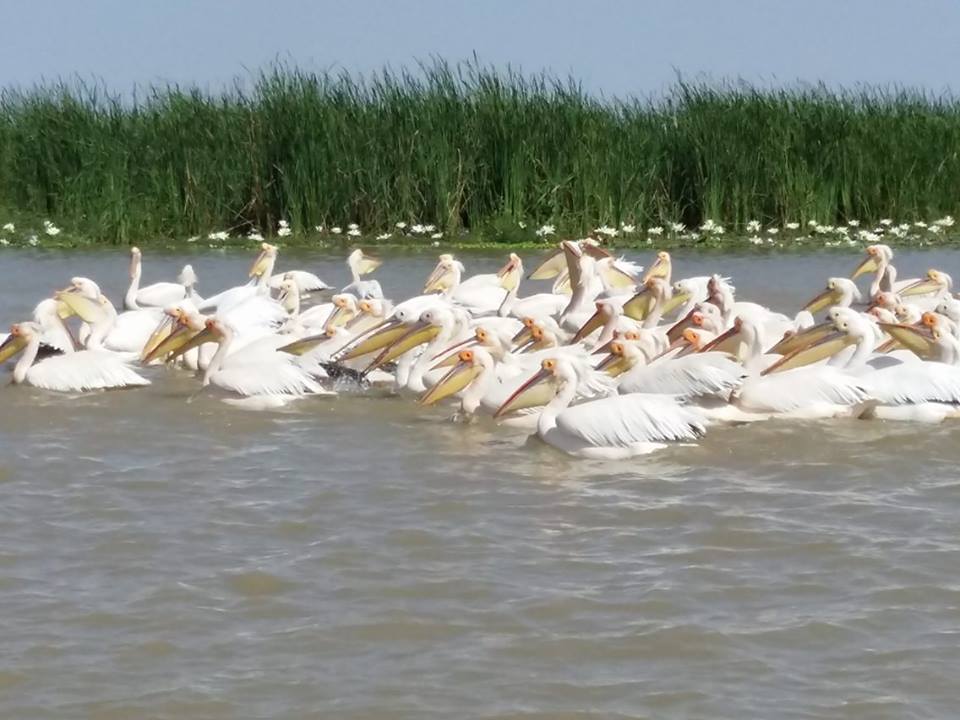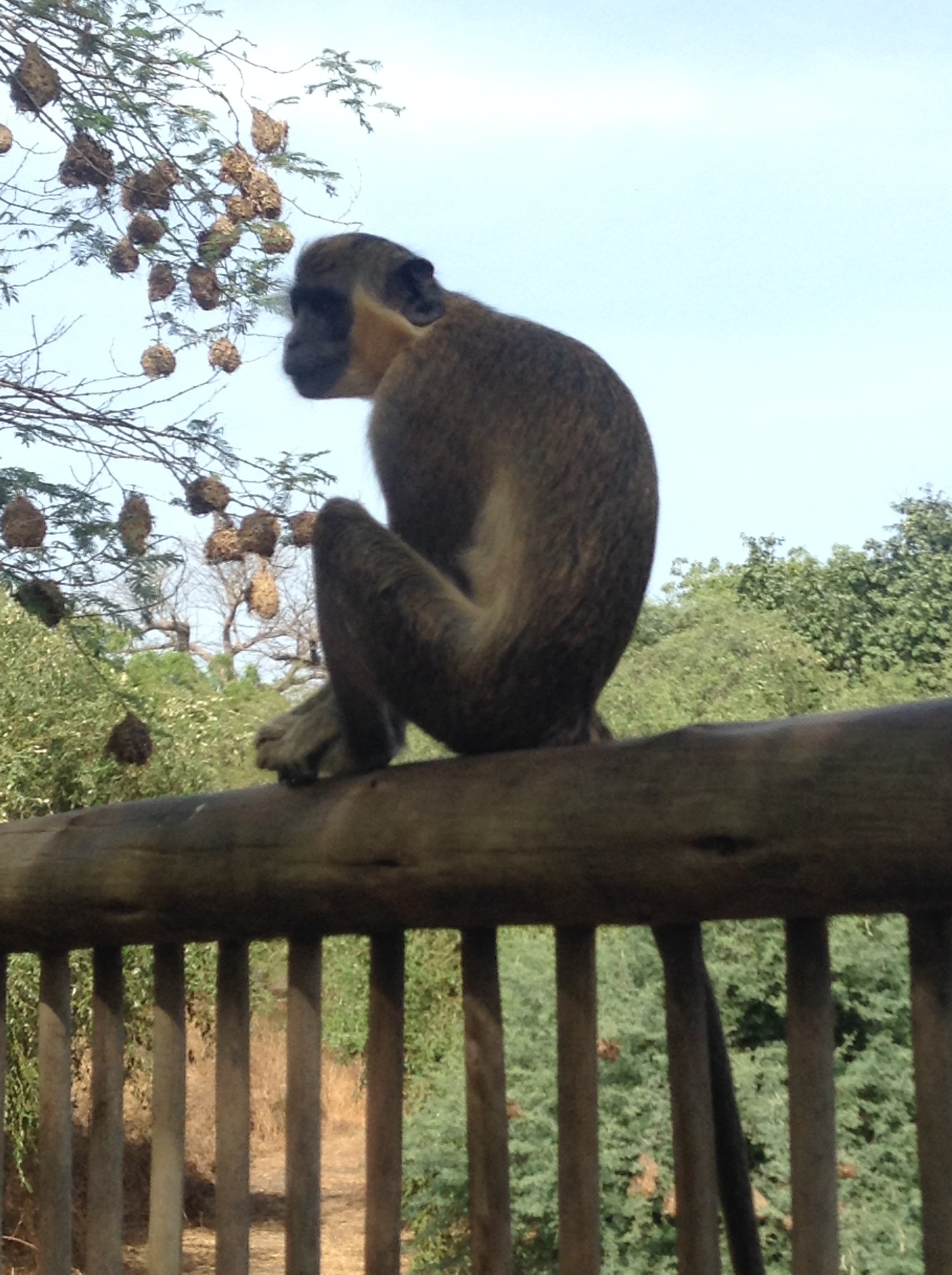
Issues about the Wild Senegalese
Last week, I wrote a blog about the trees of the country. This week is time to talk about my favourite subject…animals!
I could write so many things about the wildlife of Senegal, but because this is a CECI blog and some of the readers may be other volunteers or people visiting the country, I will write about two practical issues: where to see animals and a few rules we should follow when interacting with wild animals, mostly to be sure that we don’t have a negative impact on the wildlife.
The absolutely best place to see animals, and this may be a rule worldwide, are National Parks. Here, usually huge pieces of land are being protected for a special reason, the animals are there!
Senegal has six:
• Basse Casamance National Park in the South
• Iles de Madelaine in Dakar, a little park of only 50 hectares, of which 15 are emergent. The park consists on rockeries where aquatic birds live
• The Saloum Delta National Park in the estuary of the same name, a mangrove paradise where wildlife can be seen while navigating on a pirogue (a wooden boat)
• Djoudj National Bird Sanctuary close to St-Louis, one of the best places in the world to see aquatic birds such as thousands of white pelicans, flamingoes, shore birds and egrets.
• Langue of Barbarie is also located in the St-Louis area and a great birdwatching spot.
• Niokolo-Koba in the South East is the star of National Parks, with an amazing biodiversity including the Koba antelope, which give the name to the park and it is one of the few places where we could potentially see chimps!
There are many private or smaller reserves such as:
• Bandia Reserve in the road to Sally, created in 1997, this reserve received animals from South and East Africa, such as giraffes, kudus, and white rhinos. Vervet monkeys, jackals, and birds came by themselves, all others were brought, even the warthogs, and some Koba antelopes from the Niokolo-Koba Park. The stars of the park however, are the huge baobabs, including one that was used as a ceremonial and cemetery site for the Serer people that lived in the area
• The Fathala Wild Reserve where you can walk with young lions
• The mangroves of Somone or Joal Fadiuth that can be visited by pirogue
• The Park in the cliffs of Popenguine, where you can walk for very long time completely alone, but surrounded by butterflies, birds, and if you are lucky…monkeys
• Fangoli and Ethiolo Reserves in the South East, where you can try to see wild chimpanzees
• Guembel Park, close to St-Louis to see the torcaze and amamor gazelle and the endangered Oryx addax
• The Ferlo Fauna Reserve and the Katané Reserve in the north, where Sulcata tortoises are reintroduced as part of conservation projects
• In the Loumpul Desert you can ride domestic dromedaries and see birds and lizards adapted to this dry environment
And finally, the zoos or private collections:
• The Park of Hann in Dakar, more like a traditional zoo, where a mix of animals are in cages. There is also a Botanical Garden right beside
• The Village of Turtles in the road to the Pink Lake. Here they have more than 250 turtles from Senegal, and some exotic ones. They specialise in reproducing the giant and endangered Sulcata tortoise, and releasing them in the Ferlo Reserve. They are located in the Botanical Reserve of Noflaye, which is a relic of the forest of the Niayes region. Many of the indigenous trees have their name indicated, so you can learn about trees in this visit!
• The African Quelonian Institute in the road to Ngaparou it’s a conservation center for turtles
• The Park of Exotic Animals of Nguerigne, where you can interact with parrots
Now the ethics part… While we love animals, and we may love to interact with them, we as travellers or tourists don’t want to have a negative impact in the wildlife of the country. Because where there is a demand there will be an offer, in most cases it is better to just abstain to pay for objects or activities if the ethics are doubtful.
• You should not buy souvenirs made with animal parts of wild species, especially if they are endangered, not only you are contributing to the problem, but it may be illegal in your country. Immigration will not take it lightly to see you arrive with Carey turtle shells, ivory, corals, etc. So, be sure to check what are you buying and the impact that it will have
• In the selfie-time we are living, we all want the special picture with an exotic animal, but I suggest to go only to recognized exotic animals parks, zoos or even better, conservation centers and refuges. Sometimes, they accept volunteers for different periods of time, which will permit to really interact with the animals, and not only to take a few pictures. Never pay to take photos on a road side, a house garden, or a restaurant! This animals are surely victims of an illegal trade and they are keep in terrible conditions, without water of food for long periods
• In the same way, you should never pay to ‘release’ caged birds, may be the intentions are good, but you are only perpetuating the capturing of small birds. If you see this things happening, or wild birds being sold as pets, you may try to contact the police, or the Ministry of Water and Forests. If you are persistent enough, like I am, they may even listen to you and go to the market to seize Senegal Parrot and small birds! In Thies, they agreed, and we did this together. Now, six parrots and twenty something small birds are flying free instead of living their life in a small cage!
• If you come across an exotic animal that you feel may be released, be very careful! It may be a species from another area, and you may be creating a problem of an exotic species, such as the lion fish, the Florida turtles, and so many others that were released by owners, and now are creating a great environmental problem, eating and competing with the native species. Some animals may also not survive in the wild if they don’t know how to hunt or look for food. It is better to contact the professionals: rangers, wildlife agents, etc.
• If you want pets, really check the status and the conditions of the animals you are buying. Give priority to domestic animals that have being born in captivity and are used to it. They are way better pets than wild animals!
• If you go whale watching, be sure that the company knows and respects the minimal distances to keep. If you go bird watching of in a safari, don’t try to disturb the animals to get a better picture! They are living there, you are a visitor…If they get perturbed too often they may leave their area, even their babies
• Don’t feed wild animals. Monkeys get very aggressive if they are used to be fed. Doing this is a danger for people, and most likely, what you are giving them (such as giving bread to ducks) will make them sick
• Don’t kill or ask to kill animals just because you are afraid. Animals will be more scared than you! Even snakes prefer to go away in an unexpected encounter…just let them leave! Bats don’t get mixed in our hair! Frogs, lizards, geckos, scorpions, spiders, they all have an important role in eating mosquitoes and other insects, and I promise…they prefer to keep going with their lives rather than interfering with ours!
• When diving or snorkelling, don’t touch the very fragile corals and other living creatures. And don’t get yourself an overdose of sunscreen, it may be harmful for them. Just feel privileged to have the opportunity to spy into their amazing world
• Don’t go to circuses, aquariums or shows where wild animals perform, we know that the conditions they are living are miserable
Ok, lots of don’ts…so what CAN you do?
• Visit the national parks and reserves, do bird watching tours, snorkel and dive. Support the ecotourism economy, residents will understand that animals are more valuable alive than dead!
• Support with money or time conservation centers, programs and refuges, you can even adopt any animal you want virtually! Some places will accept you for a little of one day! Donations are much appreciated too. You may only visit, buy souvenirs of books in their boutiques, and help spreading their messages through social media
• Educate yourself and others about the importance of all living beings in nature. There are so many books, websites and very realistic documentaries about all wild subjects. Sacrifice a few movies a year and watch some documentaries instead! Don’t miss Sharkwater, Blackfish, The Cove, and all the David Attenborough’s series
• Be a guardian of all living creatures, as I do! Offer to relocate animals or insects that may otherwise be killed, do it in a safe way of course, or try to find help if you don’t know how…Call me… if I am near, I will gladly help!
Enjoy the amazing wildlife of Senegal, you may find it even in your backyard! In my garden in Thies, we have an African hedgehog that took residence, three giant Gambian rats, black kites and fruit eating bats nesting in the mango tree, grey turacos passing by each morning, common bulbuls, red bellied finches, doves, geckos, lizards, all kinds of insects, including termites. I even had a beautiful sunbird male entering my room to find spiders in the corner! On top of this, we adopted two kittens and a puppy…just to make place to the domestic animals too!
Biodiversity is everywhere… let’s try hard to keep it like that and to respect all forms of life!
In the pictures:
Vervet Monkey in the Bandia Reserve
Great white pelicans in the Djoudj National Bird Sanctuary
Sulcata tortoise in the Village of Turtles between Rufisque and the Pink Lake.






